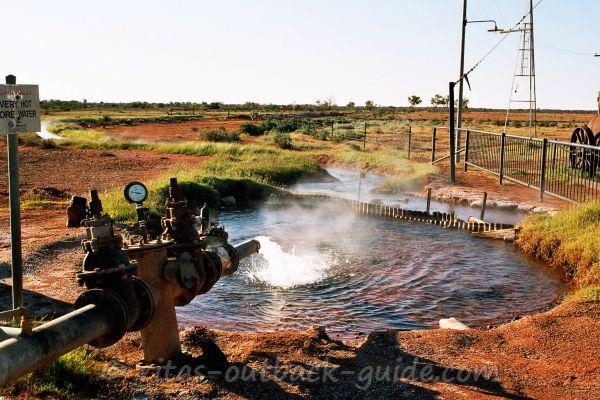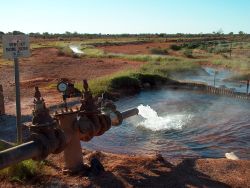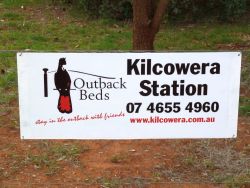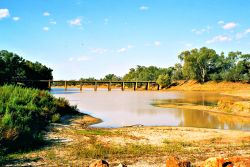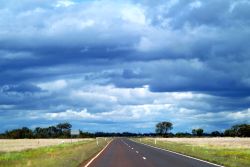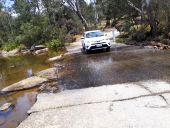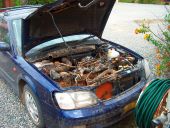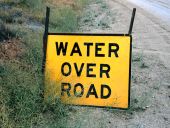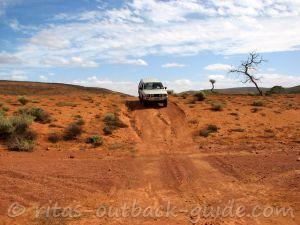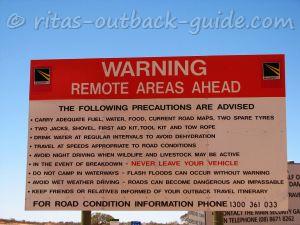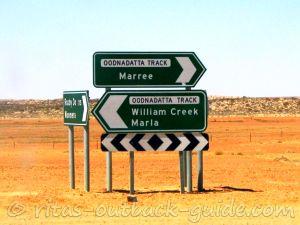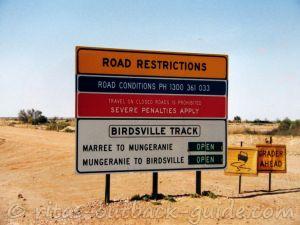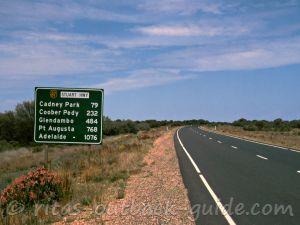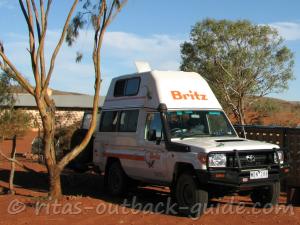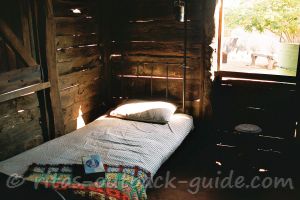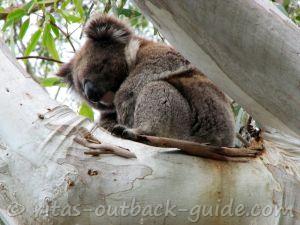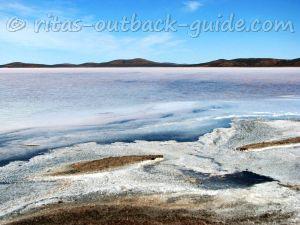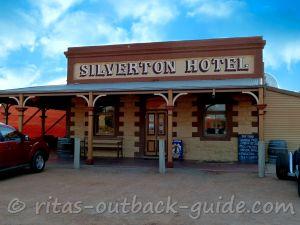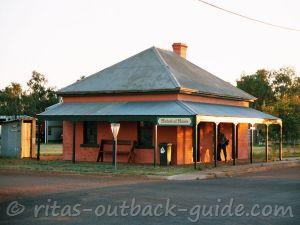Thargomindah
Discover the capital of the Bulloo Shire
Let me introduce you to another tiny bush town. Thargomindah is the hub of the Bulloo Shire in the south west corner of Outback Queensland. Like any other township in Outback Australia it has its very own flair and history. That's why I love them all. Aussie bush towns are never boring if you care to discover their secrets.
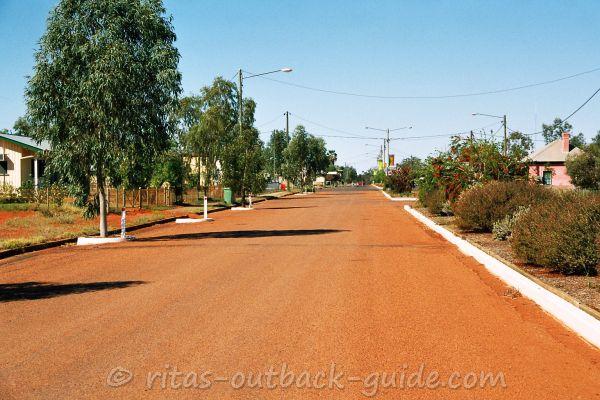 Main street in Thargomindah
Main street in Thargomindah
Established in 1874 on the banks of the Bulloo river, the town is 200km
west of Cunnamulla on the Bulloo Developmental Road, also called
Adventure Way.
Thargomindah was the first town in Australia, and next to London and
Paris, the third in the world, with electrical street lighting generated
by hydro power, thanks to the water pressure of the Artesian Basin.
Landscapes in the Bulloo region vary and are ever changing from dry red
dust to marooned mud. You'll always experience a special Outback
feeling. The name Thargomindah is an Aboriginal word meaning cloud of dust. Well, during one of my visits the town was fairly wet, far away from dusty :).
With the trees along Bulloo river and lots of greenery within the town, I
actually thought it was a fairly "green" Outback village.
Some Quick Facts about Thargomindah
- Population: 270 (2016 census)
- Location: Approx. 1,100 km north-west of Brisbane, on the Adventure Way
- State: Queensland
- Post Code: 4492
- Time Zone: Australian Eastern Standard Time (AEST)
- Best time to visit: April to October is the best time to visit to avoid the summer heat.
-
Facilities: Thargomindah offers all services travellers need. Click here to find out more about accommodation and other services.
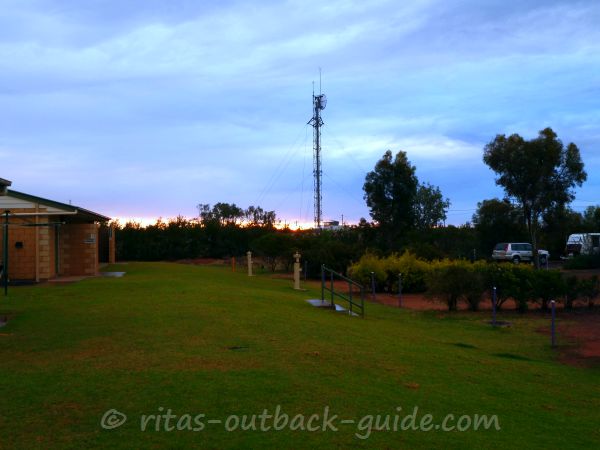 Sunset at the caravan park
Sunset at the caravan parkPoints of interest in Thargomindah
Take the heritage walk in town, stroll along Bulloo river, explore the rich history of the region.
- The Post Office opened in 1870 and is one of four remaining mud brick houses. It was destroyed by a storm in 1877. It's interior was burnt in 1952. It still serves as a post office after a turbulent life.
- The old hospital on the outskirts of town was built in 1888 and served as a hospital for 55 years. Today it is home of the visitor information centre and a small museum.
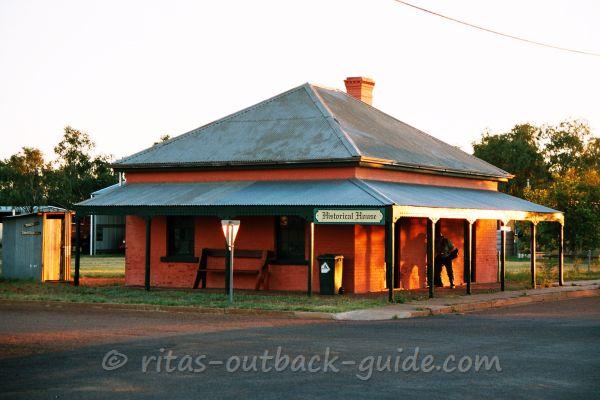 Leahy Historic House
Leahy Historic HouseThe historic house was built in 1885 by
John Leahy from local mud bricks. In 1912 well-known pastoralist Sidney
Kidman bought the house for his travelling manager.
Today the house is owned by the historical society and open for the public, It is worth a visit to see the memorabilia.
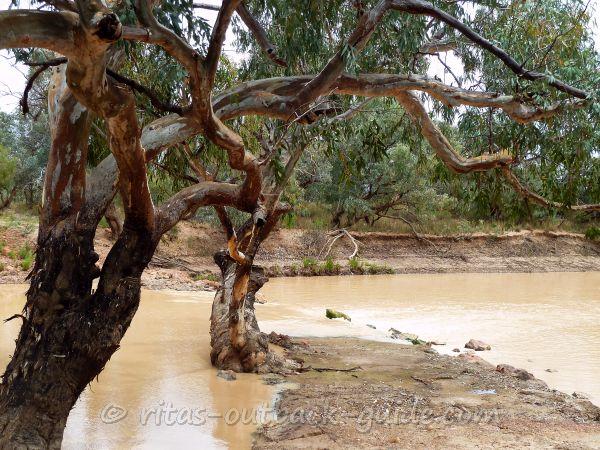 Gnarled gumtree along the Bullo river walk
Gnarled gumtree along the Bullo river walkTake the Bulloo River walk from the Cobb & Co crossing to the caravan park. Enjoy the old trees and great scenery. I truly love to stroll along the river, and do it on every visit.
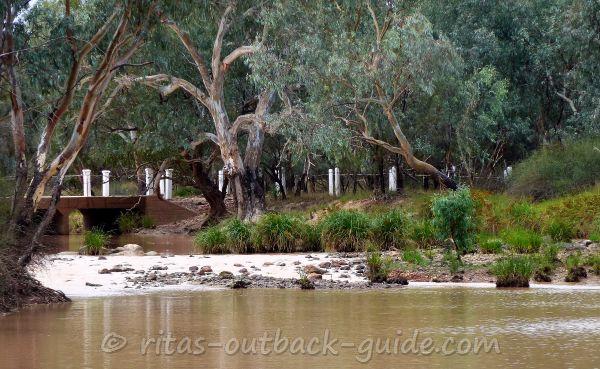 Cobb & Co crossing & the Bullo bridge
Cobb & Co crossing & the Bullo bridgeIn the late 19th century the town was a Cobb & Co. station. From
here coaches serviced settlements like Hungerford, Wompah and Toompine.
You can still see the stone crossing in the Bulloo river used by the coaches.
Attractions in the neighbourhood
- Currawinya National Park - The main
attraction in the park are Lake Numalla (freshwater) and Lake Wyara
(salt water). The wetlands make the park a great place for
bird-watching. The National Park's area was once a grazing property.
Relics of buildings and machinery are of interest for those interested
in heritage.
There's a project running to re-introduce the bilby which has nearly disappeared in Queensland.
Currawinya NP is about 200 km south-east near Hungerford and the border to New South Wales. You better have a high clearance vehicle to explore the park. - Lake Bindegolly National Park is just 35 km east of Thargo. It is a place for nature's enthusiasts. Access to the park and its three lakes is only by foot to protect the fragile nature. There's a 9,2 km walking trail along Lake Bindegolly.
- Take the Dowling Track to Hungerford on the Queensland/New South Wales border. The Royal mail hotel from 1873 still exists and serves the local population of 12. Hungerford is close to the Currawinya National Park.
- Noccundra is about 145 km west of
Thargomindah on the banks of the Wilson river. In the early 1880s a
stone hotel was built which is heritage listed today. Enjoy a cold drink
in the beer garden or on the veranda before you head out further into
remote areas.
The Hydro Power Plant in Thargomindah
The artesian water bore that provided the water power was drilled in
1893. Water pressure was so powerful that the local council decided to
build a power plant. Lights in the street went on in the same year.
The hydro-electric power plant continued to supply Thargomindah with
electricity until 1951 when it was replaced with a generator driven by a
diesel engine.
The Pelton Wheel is a wheel driven by a jet of water from an
Artesian Basin bore. It is connected to dynamos by a shaft and uses the
energy of the water to provide electricity. As the demand for
electricity rises, a valve is opened to increase the speed of the water
wheel and when the load decreases, the water is cut.
The original water-wheel was made locally (probably by local blacksmith
Joe Hood) to the design of Mr. Holmes, the engineer to the Division
board. It is said to have a casing made from a ship's water tank.
(information from the displays in the shed at the town bore)
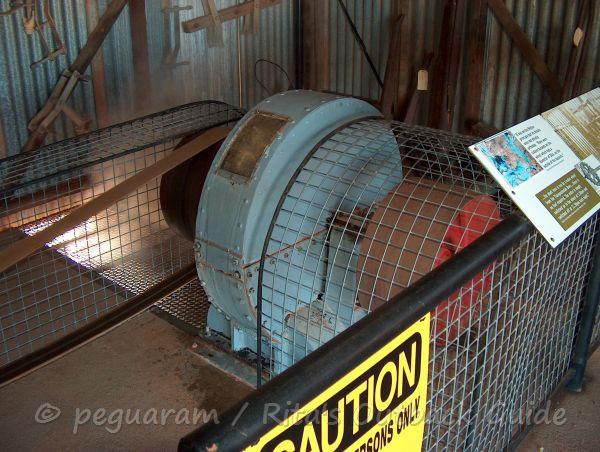 Hydro Power Plant
Hydro Power Plant
The artesian bore just 1 km outside town is worth a visit. There's a
replica of the original shed, and a display of all types of renewable
energy. Inside the shed are many original items including a working Pelton wheel.
I was very lucky and received a private
demonstration how they produced electricity in the early days. It really
was a highlight when the water roared through the wheel, and the bulbs
went on in the shed.
Don't miss these helpful articles to plan your trip
Below you'll find more useful articles to help you plan your journey.
- Home ›
- Matilda Way ›
- Thargomindah
